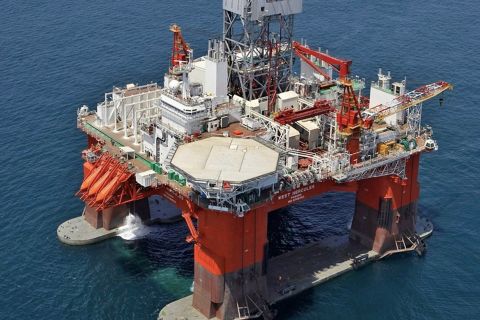Though the federal Resource Conservation and Recovery Act (RCRA) largely exempts E&P from most hazardous waste requirements, the majority of states and some localities have their own regulations that can range from somewhat expensive to prohibitively so.
And because more than a barrel’s worth of solid cuttings is produced for every 0.6 m (2 ft) of modern oil and gas drilling, the issue of remediation looms large for American drillers. This is especially so when the material includes salts; hydrocarbons; pH; and metals such as lead, mercury, and arsenic.
Traditionally, most oil and gas operators buried their waste after partial treatment, land-spread it, or hauled it off to a disposal site. While in some cases this is still appropriate, there is an economically sensible way to develop the nation’s oil and gas resources while also reducing environmental impacts.
Prioritizing means of disposal
This model mirrors the US Environmental Protection Agency’s (EPA’s) Solid Waste Management Hierarchy, which most states have adopted as well.
The inverted pyramid of this hierarchy begins with source reduction and reuse as the best-case scenario; recycling as the next best alternative; energy recovery (such as retrieving usable methane gas out of an old landfill); and conventional treatment and disposal as the last resort.
At the least favored end of the hierarchy, where most disposition has traditionally taken place, there have been a variety of approaches and techniques, each with its seeming upside as well as substantial drawback and cost.
The apparent advantages of treating and burying waste have been seen as simplicity, low immediate cost, limited surface area requirements, and the likely proximity of disposal onsite or in nearby pits or landfills.
However, with this approach there has always been the possibility for liability due to the potential migration of waste and groundwater contamination.
The seeming advantages of land-spreading include its simplicity and low cost as well as the potential in some cases to improve soil conditions and for naturally occurring microbes to assimilate waste constituents in place.
However, with this approach there also are potential downsides. Salts and metals, for example do not biodegrade, and the approach also has potentially large land requirements. Further, soil may be damaged by high molecular-weight compounds, and dust control may be required.
And traditional disposal at a commercial facility has its seeming advantages as well when regulators do not allow onsite disposal, perhaps because a marshy, high water-table environment renders onsite techniques problematic, for example. Hauling off waste to a facility also may make sense when there is a relatively small volume of waste.
Here, too, there are drawbacks. For one, there is less universal regulation. Large processing facilities also could have an impact on nearby populations or the surrounding environment, including increased risks associated with airborne particulate emissions. And some states and areas simply have few or no disposal site options.
A new approach
Given the substantial back-end costs and risks associated with these standard techniques, it was time for a different approach. This approach consistently demonstrates that improved bottom lines are possible while fully complying with environmental regulations. It also shows that strict, self-imposed environmental goals that go even further can achieve the same or even better bottom-line results.
This technology enables oil and gas operators to recycle, treat, and/or dispose of solid drilling waste while also reducing their liabilities, cutting costs, and lessening their environmental footprints.
After years of research, development, and experimentation with real-life applications, these patented methods exceed current environmental requirements set by the EPA as well as state regulations. By improving upon the well-established “solidification/stabilization” method of encapsulating contaminants and/or making them insoluble, companies are better able to remediate solid drilling waste.
Solidification involves an encapsulation strategy that uses proven field technologies to treat contaminated sediment, sludge, and soils with reagents to cause physical or chemical changes that will reduce environmental concerns and impacts. Contaminants are entrapped within a solid matrix, literally coated at the molecular level. Organics, meanwhile, are generally immobilized by way of reduced hydraulic conductivity.
Stabilization is the process whereby the same solid waste contaminants are adsorbed or bound rather than encapsulated. It may involve chemical transformation, and metallic contaminants are stabilized by precipitation or by interaction with cement matrix.
The process generally involves four phases. First, the actual constituents of the solid drilling waste are positively identified. Next, the most appropriate reagents to add to the solid drilling waste are determined and designed. The reagent mix design is confirmed by a bench-scale experiment. Third, the structure designed during the bench-scale is built. Finally, the success of the process is verified. These confirmatory results are then reported to the customer and regulatory agency.
Treatment plans for individual sites are fine-tuned, and extra time and effort are invested in testing, with a focus on sequestering the waste and making it durable and recyclable. Though it might not have been considered realistic just a few years ago, solid drilling waste now is actually reused for roads, drill pads, and other load-bearing structures.
Key performance parameters are strength, hydraulic conductivity, and leachability. The results of the work must properly sequester contaminants and manage water exposure. The solidified and stabilized drilling waste also must withstand expected loads. Research has shown that solidification and stabilization systems designed using these key parameters can last several thousand years.
The bottom-line benefits are numerous, and meeting or exceeding federal or state requirements is only the beginning. The movement of waste offsite is limited; the possibility of spills is reduced; the costs of offsite disposal are lowered; and the raw material for roads, pads, and other load-bearing structures is already on hand. Additionally, there is no concern about commingling with another company’s waste, and long-term liability issues are reduced because the waste is separated in structures with low hydraulic conductivity.
Staying on the cutting edge
Scott is partnering with universities and industry best-management organizations to further advance its technology through R&D pilot projects. For example, in collaboration with the Environmentally Friendly Drilling Program in the desert near Pecos, Texas, Scott participated in a pilot program with Texas A&M University. The purpose was to test solutions in the Eagle Ford shale development, specifically addressing how the increased traffic is causing significant damage to surface lease roads in the South Texas region.
After treating the mud and drilled cuttings waste, including waste that was heavily contaminated, the materials were solidified, stabilized, and made into a durable road that posed no pollution potential.
This research project demonstrated that constructing roads with materials recycled from drilling waste could serve both environmental and economic objectives for the oil and gas industry.
In business, and specifically the energy business, being environmentally proactive and responsible will only become more important going forward. With advances in technology, industry now has the tools and expertise to enable much more cost-effective oil and gas operations while also ensuring better protection of the environment and reducing exposure to future liabilities.
Recommended Reading
Equinor Receives Significant Discovery License from C-NLOPB
2024-02-02 - C-NLOPB estimates recoverable reserves from Equinor’s Cambriol discovery at 340 MMbbl.
US Drillers Add Oil, Gas Rigs for Second Week in a Row
2024-01-26 - The oil and gas rig count, an early indicator of future output, rose by one to 621 in the week to Jan. 26.
Second Light Oil Discovery in Mopane-1X Well
2024-01-26 - Galp Energia's Avo-2 target in the Mopane-1X well offshore Namibia delivers second significant column of light oil.
Sangomar FPSO Arrives Offshore Senegal
2024-02-13 - Woodside’s Sangomar Field on track to start production in mid-2024.



